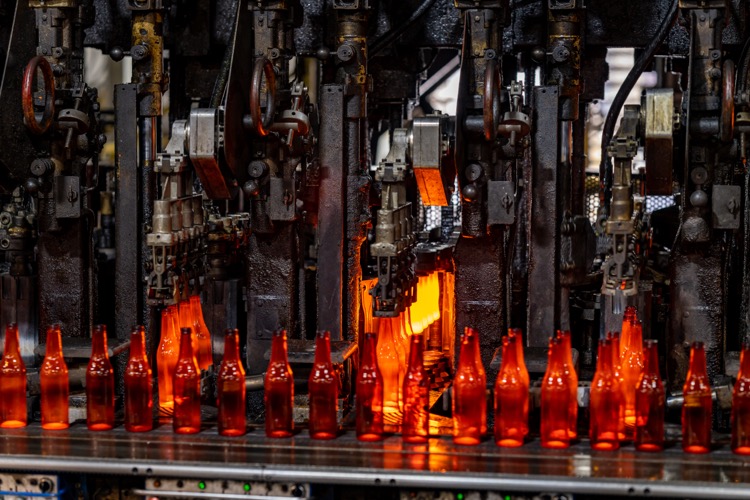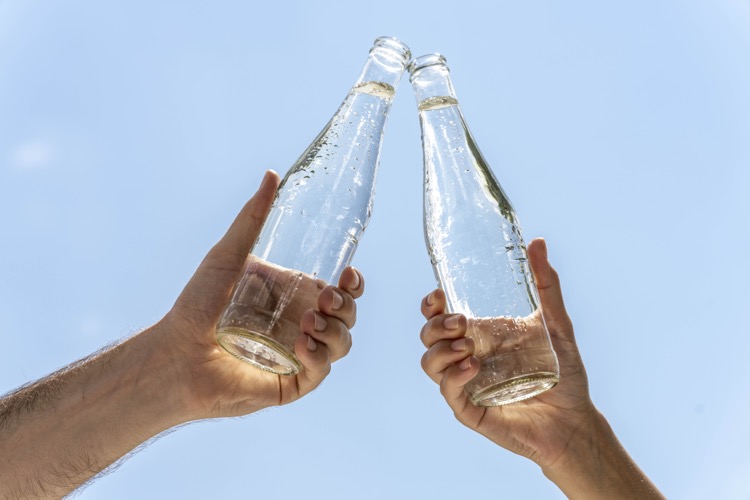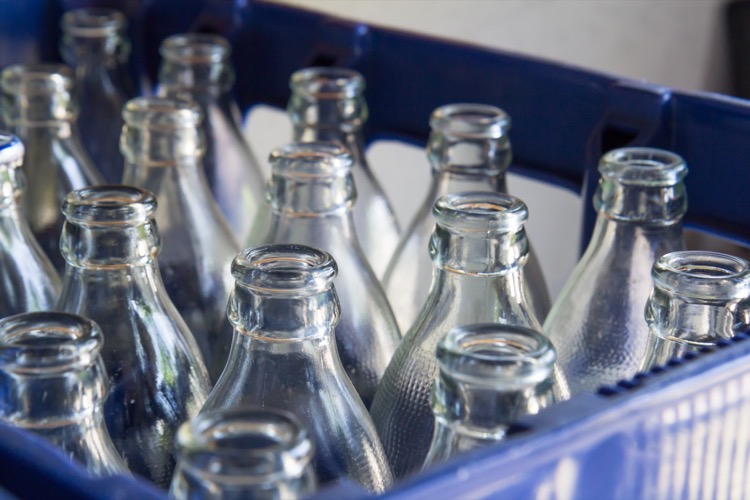When you see the leading edge technology that O-I uses to make sustainable glass packaging, it’s downright impressive, and even a little mind-bending. On the flip side, your job in the circular economy as a consumer is about as low-tech and no-fuss as it comes: it’s as easy as tossing your empty glass bottle into the recycling bin.
No sort by numbers. No separating colors. No crushing. Simply finish your favorite foods and beverages and place your empty glass container in your recycling bin. Just like that, you’ve made a difference. You’ve conserved energy, you’ve reduced emissions, and you’ve conserved natural resources. Well done!
And while your day as a recycling hero may be winding down, your recycled glass bottle’s work as a sustainable superstar has just begun.
Glass Sorting at Material Recovery Facility
Your glass, along with other recycled materials, is hauled from your curbside recycling bin to a material recovery facility—also known as a MRF. The MRF is a giant sorting facility used to divide recyclables into their respective streams. Fortunately, glass bottles and jars are easy to separate from the other recyclables.
Glass is typically the first to be processed as it is among the easiest to separate. Glass is crushed and separated through slotted belts, or shakers, to ensure it’s not mixed with cans, office papers or other non-recyclables that inadvertently ended up in the glass packaging recycling stream.
Unlike the single step of separating glass, a wide range of mechanical and manual sorting techniques are needed to identify and organize other materials. For example, there are dozens of types of plastics, including the grades like plastic bags and snack packaging that aren’t recyclable. These various grades of plastics require manual sorting or advanced optical scanning to separate.
Like plastics, manual separators are needed to separate the paper from the cardboard along with the use of large, rotating drums. Energy is used to run magnets that separate ferrous materials as well as eddy currents used to separate aluminum.

For glass, the cullet is then screened and processed to remove any incidental waste, like lids, caps or scraps. Think of this part as separating your ingredients based on what you’re making. Clear glass, called flint by glass professionals, is recycled to make new clear glass packaging. Browns and greens can be recycled into amber and new green containers.
Regardless of the destiny, the glass from your recycling bin helps to offset the natural resources used to make new glass.
More Recycled Glass, More Energy Savings
When the recycled glass reaches manufacturers, like us at O-I, this is where that bottle you recycled begins to make a difference. The recycled glass packaging you put in the curbside bin, now crushed into cullet form, is used during the glass-making process to offset the demand for the natural ingredients used to make glass. Glass is pure and natural. It is made from sand, soda ash, limestone and your recycled glass. And, you’re conserving it. For every ton of glass recycled, more than a ton of natural ingredients is saved, including 1,300 pounds of sand, 410 pounds of soda ash and 380 pounds of limestone. This isn’t a one-time deal. Your glass bottle can be recycled over and over, meaning that your savings will continue to add up every time you recycle glass. Bravo fellow recycler!

Remember that energy you took credit for conserving by recycling your bottle? Here it is. Recycling glass requires 34% less energy than producing glass form natural materials. This savings adds up with the amount of recycled glass used to make new glass. This is called recycled content. As a general rule, for every 10% of recycled content used in making new glass, an energy saving of about 3% can be achieved. Look at you saving energy!

You can breathe easier knowing that you reduced emissions by tossing that glass packaging in the recycling bin. For every six tons of recycled glass used, one ton of the greenhouse gas carbon dioxide is reduced. You and your fellow recyclers just cleaned up our air. Thank you!
Glass Packaging and the Circular Economy
If you want to begin impressing your green friends with your environmental prowess, you can tell them how you contributed to the circular economy. What what?! The circular economy is aimed at keeping resources in a cycle used to make new products. It minimizes the need for external resources to make new products.
Lucky you! You chose glass which is very “circular” as it can be recycled over and over without loss of quality. So, when your friend is bragging about their contributions to the circular economy, you can confidently tell them that the glass bottle you recycled can go from your recycling bin back into a new bottle in as little as 30 days. Knowledge dropped!

Hold up! No curbside recycling program in your area? Glass mistakenly excluded from your local recycling program? Hope is not lost. We know you’re already doing the right thing and taking your recyclables to a local drop-off facility. Great news! You can take your glass to the drop-off as well and free your bottle to do its life’s work. And, you, my friend, you can brag about the extra mile you went to do your part for the environment. No autographs, please!
If you’re looking to pad your environmental resume, keep buying your ingredients packaged in glass. When you buy products packaged in glass from O-I, you can tell your friends that you’re buying recycled while ensuring demand for that next bottle you’re going to recycle.


















